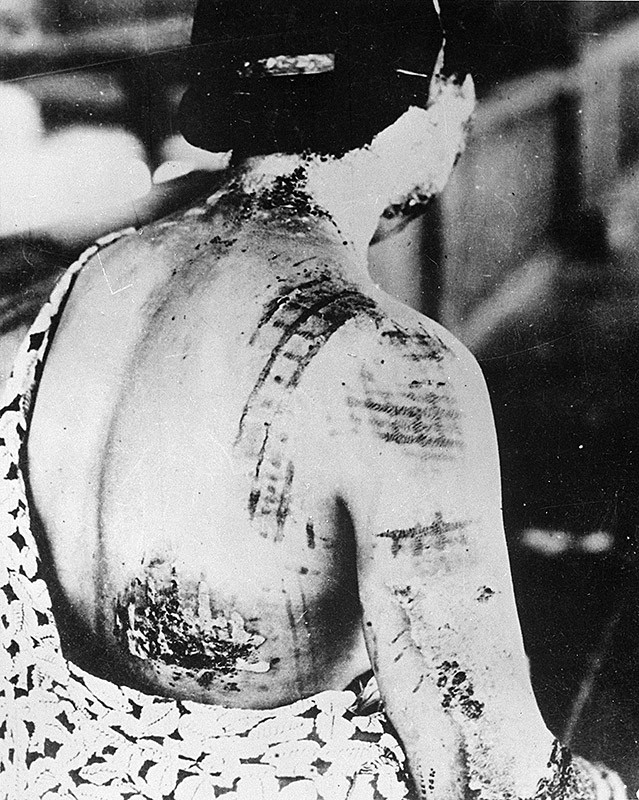Hiroshima Anniversary: What Actually Happened When the Atomic Bomb was Dropped?

On 6 August 1945, an American B-29 bomber dropped the world's first deployed atomic bomb over the southern Japanese city of Hiroshima.
The explosion immediately wiped out around 90% of the city and killed around 80,000 people. Tens of thousands more would later die of radiation exposure, and the devastating power of what Japenese emperor Hirohito described as a "new and most cruel bomb" was unleashed.
Three days later, a second B-29 dropped another A-bomb on Nagasaki, killing an estimated 40,000 people.
One minute after
At 8.15am Japan time, US bomber Enola Gay released the nuclear bomb 'Little Boy' above central Hiroshima. The 9,000-pound uranium-235 bomb took 43 seconds to fall from the aircraft, which was flying at 31,060ft. The aircraft travelled 11.5 miles away before it was buffeted by shock waves from the blast.
The aircraft, flown by Colonel Paul Tibbets and 11 other men of the United States military forces, had just dropped the first atomic bomb used in combat.
Due to crosswind, the bomb missed the aiming point - the Aioi Bridge - by approximately 800ft and detonated directly over Shima Surgical Clinic. One minute after the A-bomb was released from the plane, it exploded 2,000 feet above the clinic in a blast equal to 12-15,000 tons of TNT, destroying five square miles of the city.

People on the ground reported seeing a brilliant flash of light followed by a loud boom. Some 70,000–80,000 people (around 30% of the population) of whom 20,000 were soldiers, were killed instantaneously by the blast and resultant firestorm.
One hour later
An hour after the detonation, the remains of Hiroshima were still burning. As well as the tens of thousands dead, an estimated 70,000 people were injured as the impact flattened the majority of the city.
Some of the reinforced concrete buildings in Hiroshima had survived the blast, and as the bomb detonated in the air, it was directed downwards rather than sideways.
Over 90% of the doctors and 93% of the nurses in Hiroshima were killed or injured, as most had been in the downtown area which received the greatest damage. The hospitals were destroyed or heavily damaged, hindering aid to the injured.
In the communications room of Chugoku Military District Headquarters, which was responsible for issuing and lifting air raid warnings, a female high school student who had been mobilised to serve as a communications officers informed Fukuyama Headquarters of the attack.
Using a special telephone, Yoshie Oka said: "Hiroshima has been attacked by a new type of bomb. The city is in a state of near-total destruction."
Ten years later
Around a decade after the attack in Hiroshima, the long-term effects suffered by atomic bomb survivors began to become apparent.
The increase in cancer incidences was first noted in 1956, and shortly afterwards, tumour registries were started in both Hiroshima and Nagasaki to collect data on the excess cancer risks caused by the radiation exposure.
Among the effects, one of the most deadly was leukaemia - disproportionately affecting children. An increase in leukaemia appeared about two years after the attacks and peaked around four to six years later.
Around 1,900 cancer deaths can be attributed to the after-effects of the bombs. An epidemiology study by the Radiation Effects Research Foundation states that from 1950 to 2000, 46% of leukaemia deaths and 11% of solid cancer deaths among the bomb survivors were due to radiation from the bombs.
© Copyright IBTimes 2025. All rights reserved.






















